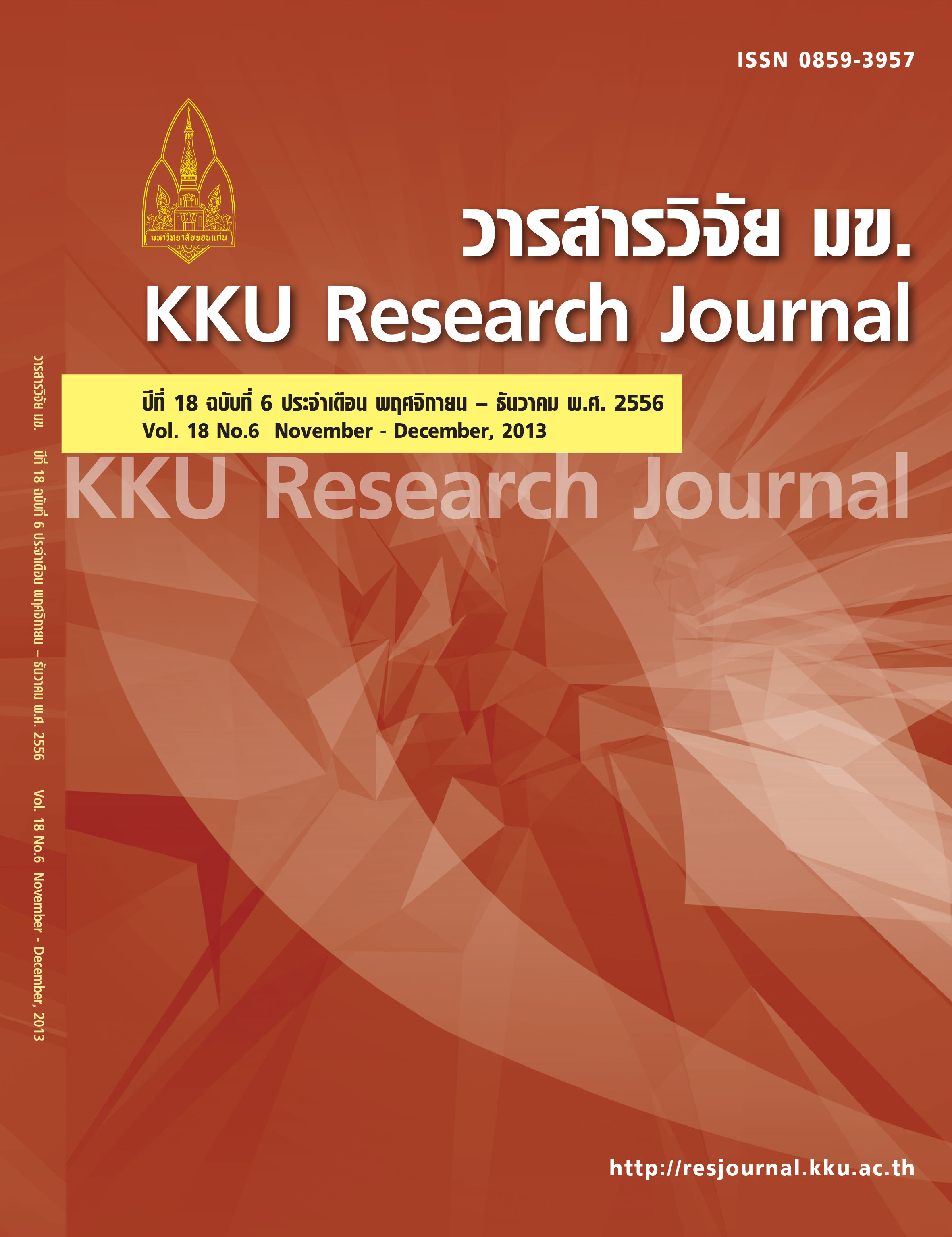Investigation of cooling effect of urban green area on air temperature and relative humidity
Main Article Content
Abstract
In this study, the cooling effect of urban green areas on air temperature and relative humidity is investigated. In order to compare the maximum and minimum values from green areas of different sizes, two parks were selected: a small one, Wongweinpahon 24 Park covering the area 1.2 rai (1,920 m2) and a large one, Prachanivech Park covering the area 10 rai (16,000 m2). The study period covered summer and winter seasons. The following factors were considered: solar intensity, surface temperature, air temperature and relative humidity. The analysis results between solar intensity and all temperature values show positive correlation. That was solar intensity varied directly to surface and air temperature. The average values from the two parks show that Prachanivech Park had lower air temperature and higher on relative humidity than Wongweinpahon 24 Park. The high temperature values were often found in the surrounding of the parks, either in open field or grassland areas where have lower shade from trees. Conversely, the lower temperature values were often found inside the park areas where have more shade from trees. With a large green area, Prachanivech Park has higher cooling effect than Wongweinpahon 24 Park, where has a smaller green area. Thus, as a result of their cooling effects, green areas were therefore found to have the capability to decrease the surrounding air temperature.
Article Details
References
(2) Hamada, S. and Takeshi O.. Seasonal variations in the cooling effect of urban green areas on surrounding urban areas. Urban Forest and Urban Greening. 2010;9: 15-24.
(3) Oliveira, S., Henrique A. and Teresa V. The cooling effect of green spaces as a contribution to the mitigation of urban heat: A case study in Lisbon. Building and Environment. 2011;46: 2186-2194.
(4) Panitta Patimeta. A Study on Relationship Between Urban Green Space and Global Warming Factors: A Case Study on Pathumwan District[MSc Thesis]. Nakhonpathom: Silpakorn University; 2008. Thai.
(5) Vu T. C., Takashi A. and E. M. Abu. Reductions in air conditioning energy caused by a nearby park. Energy and Buildings. 1998;29: 83-92.
(6) Warapsorn Akkhaneeyut. Effect of Green Area Size on Air Temperature and Relative humidity in Urban Area[MSc Thesis]. Bangkok: Kasetsart University; 2005. Thai.
(7) Byers, H.R.. General meteorology. 3rd ed. New York: McGraw-Hill; 1959.
(8) Namphawan Kijjarakkul. The climate of Thailand. Nakhonpathom: Silapakorn University Press; 2006. Thai.
(9) Rangsan Apakubpakul. Introduction to Meteorology. Bangkok: Chulalongkorn University Press: 2004. Thai


